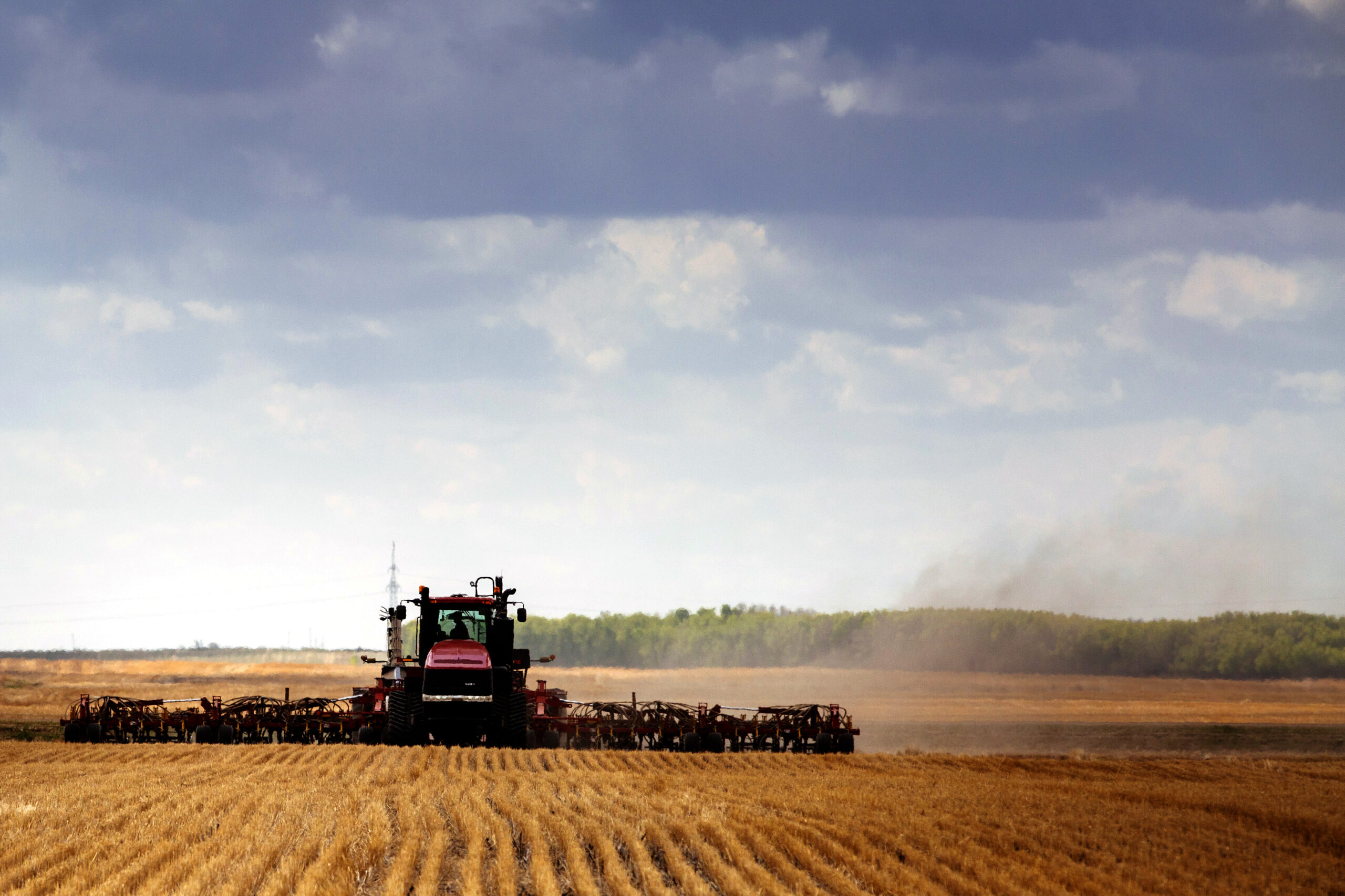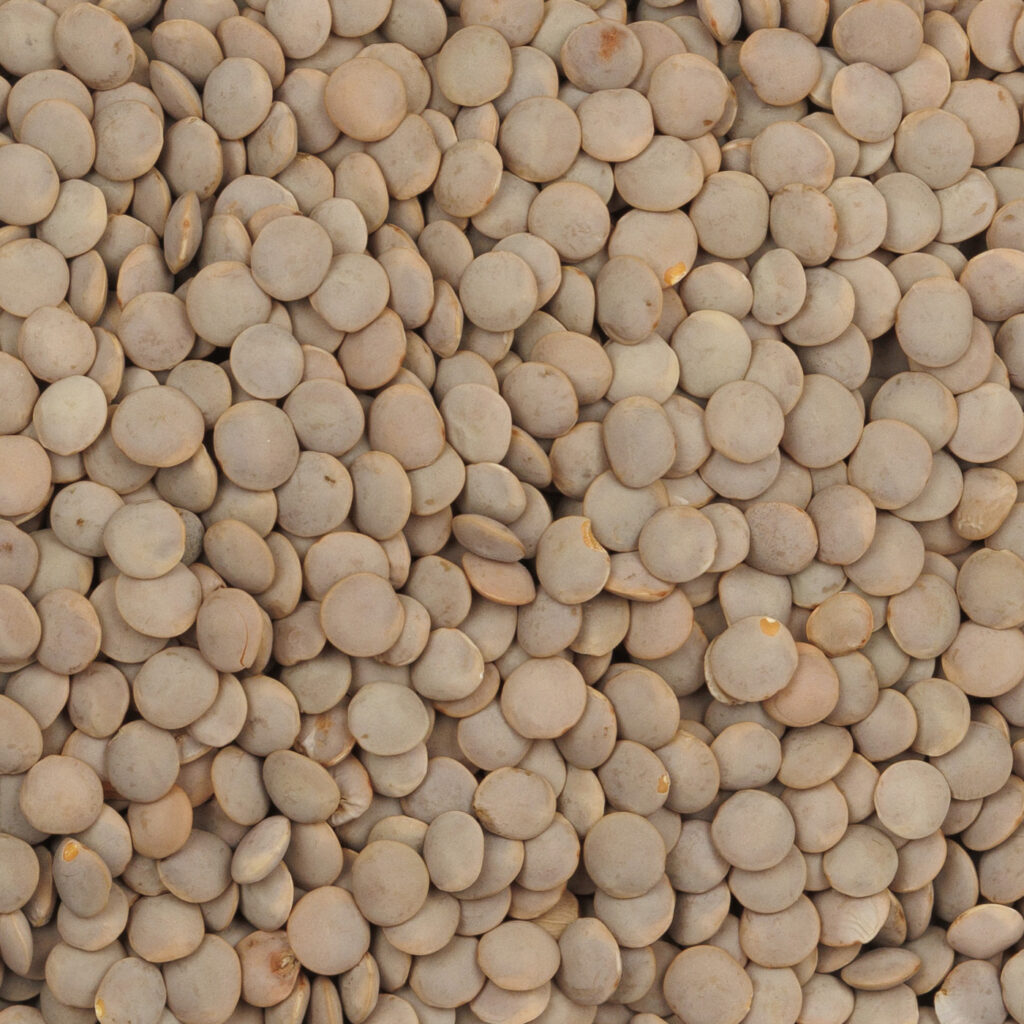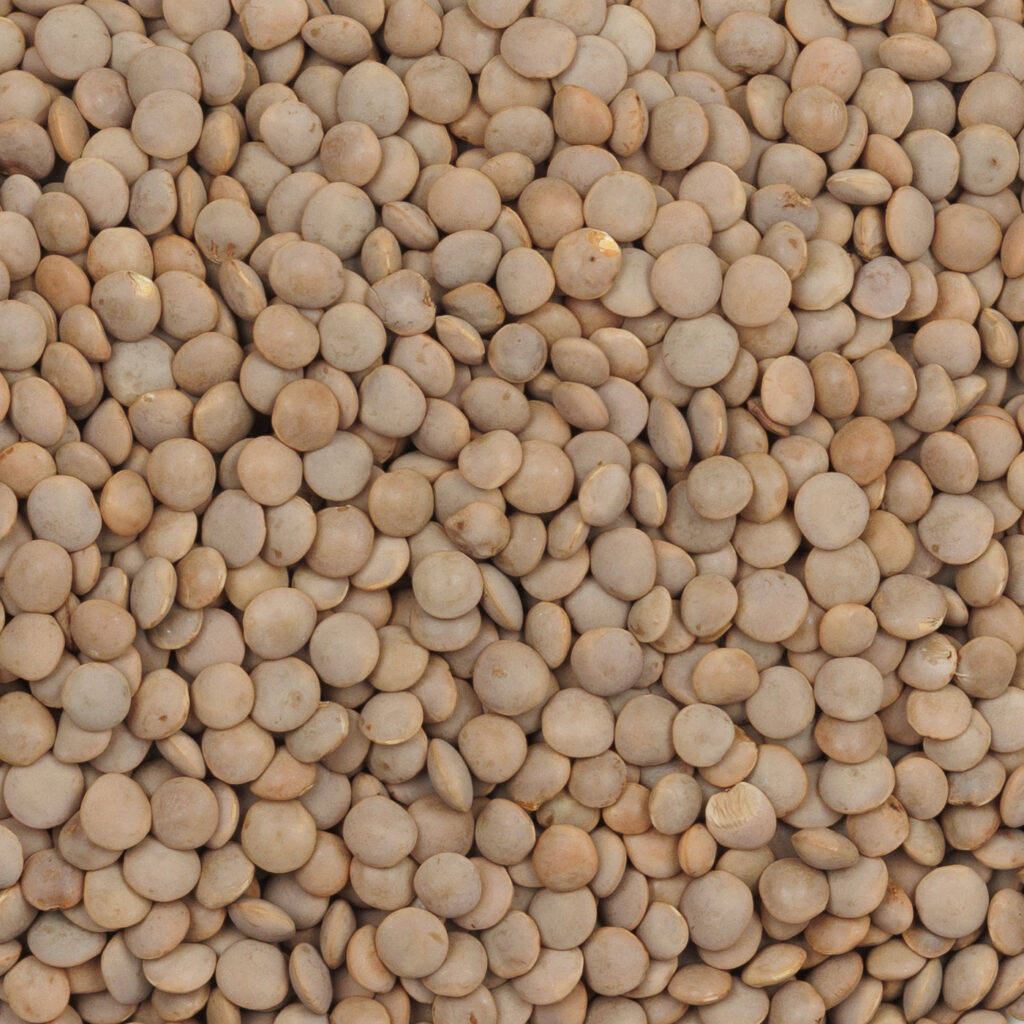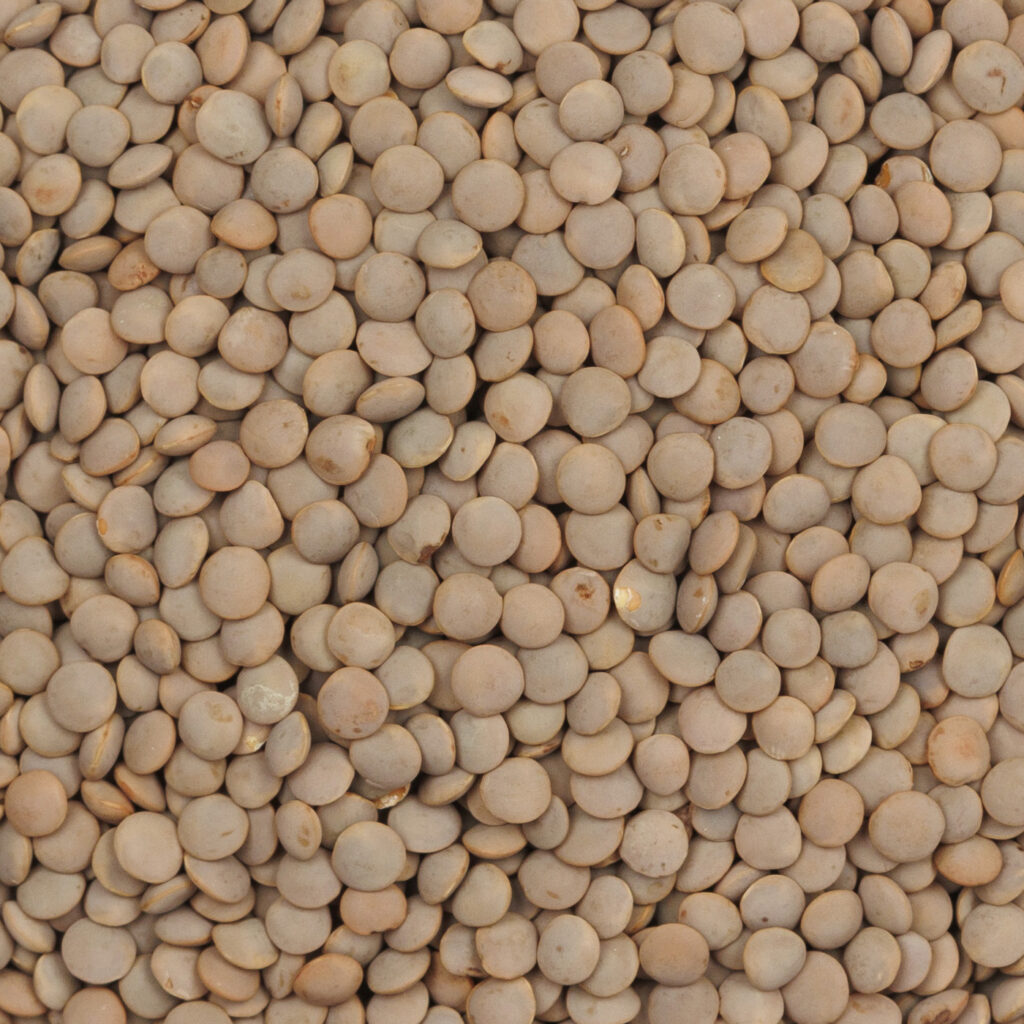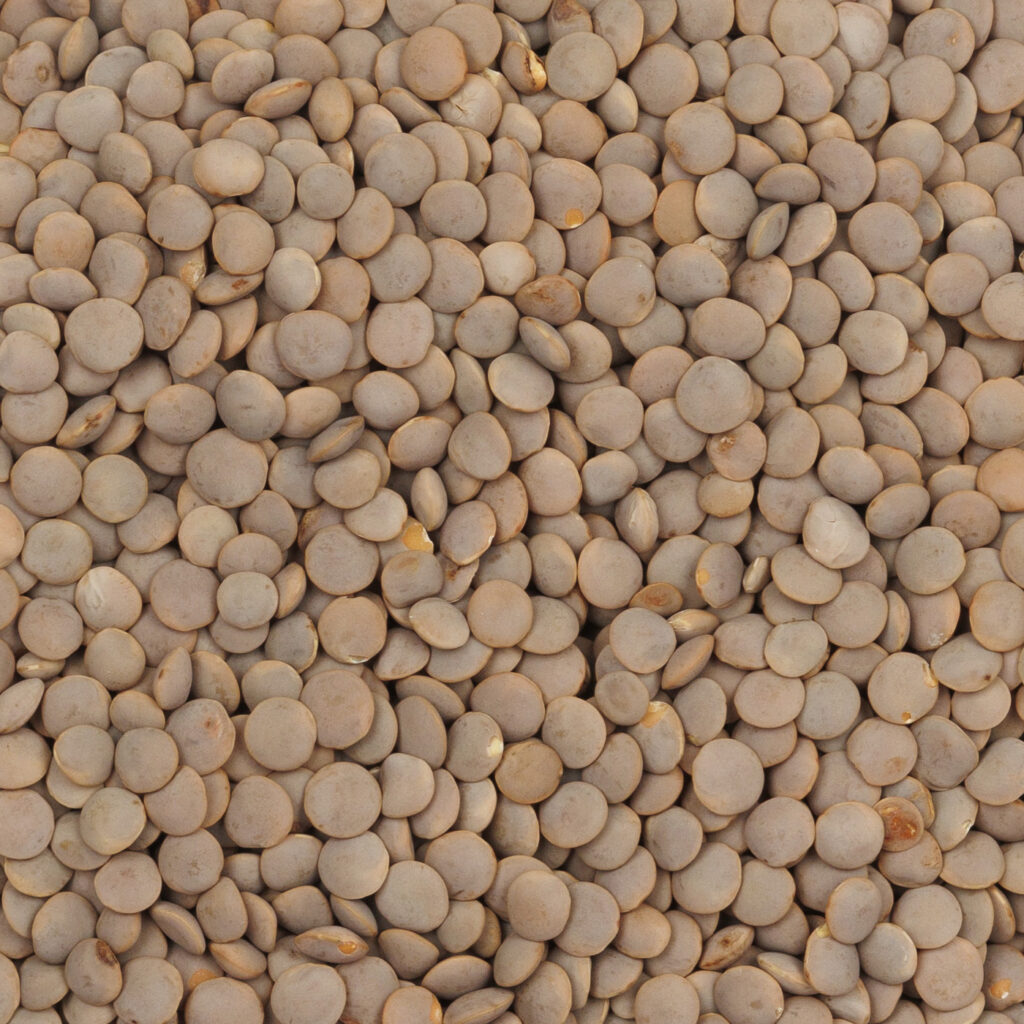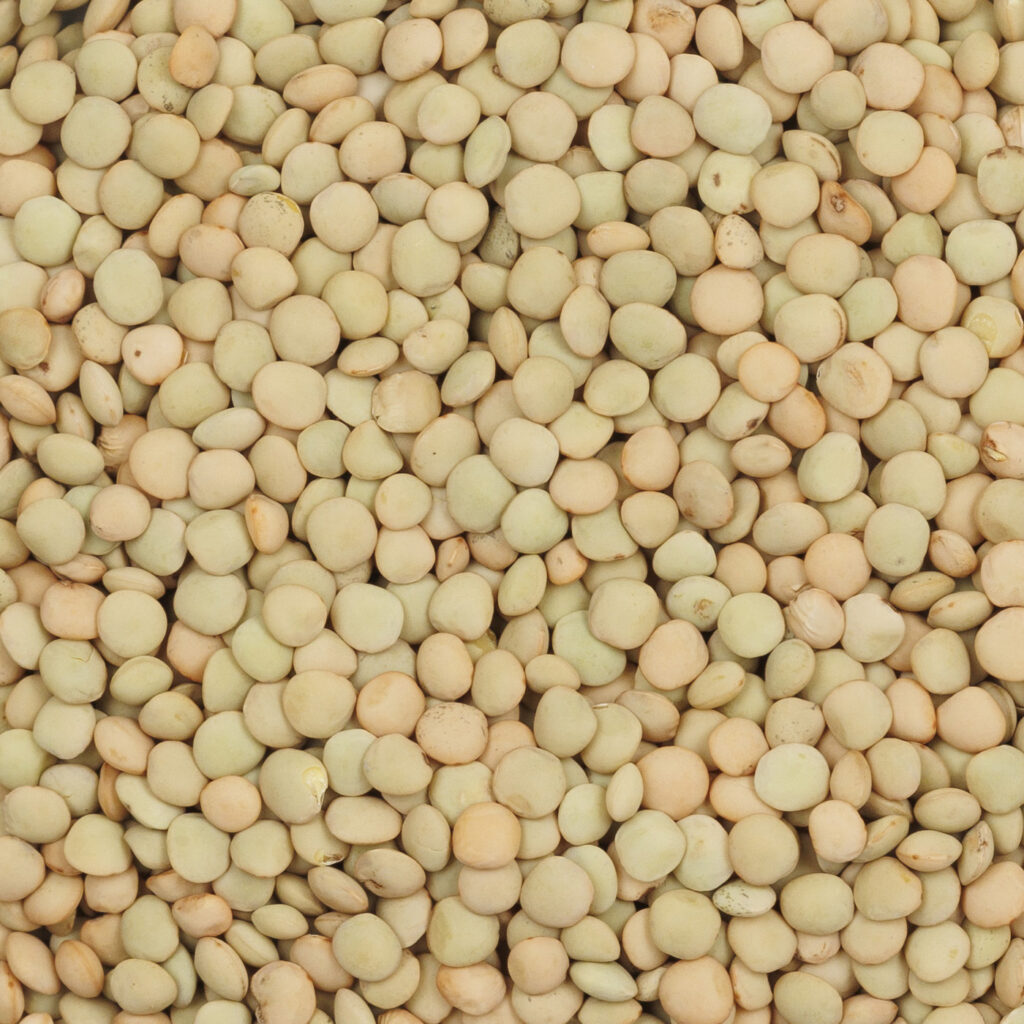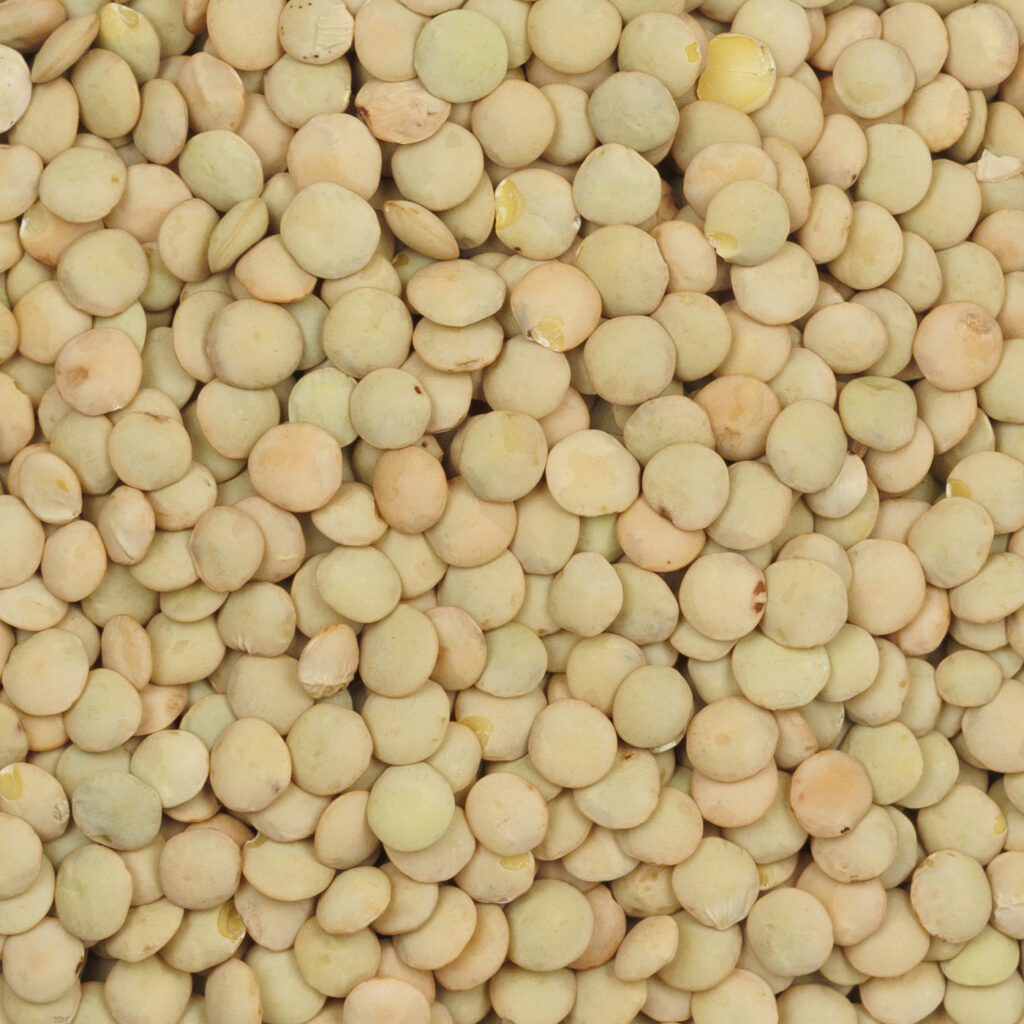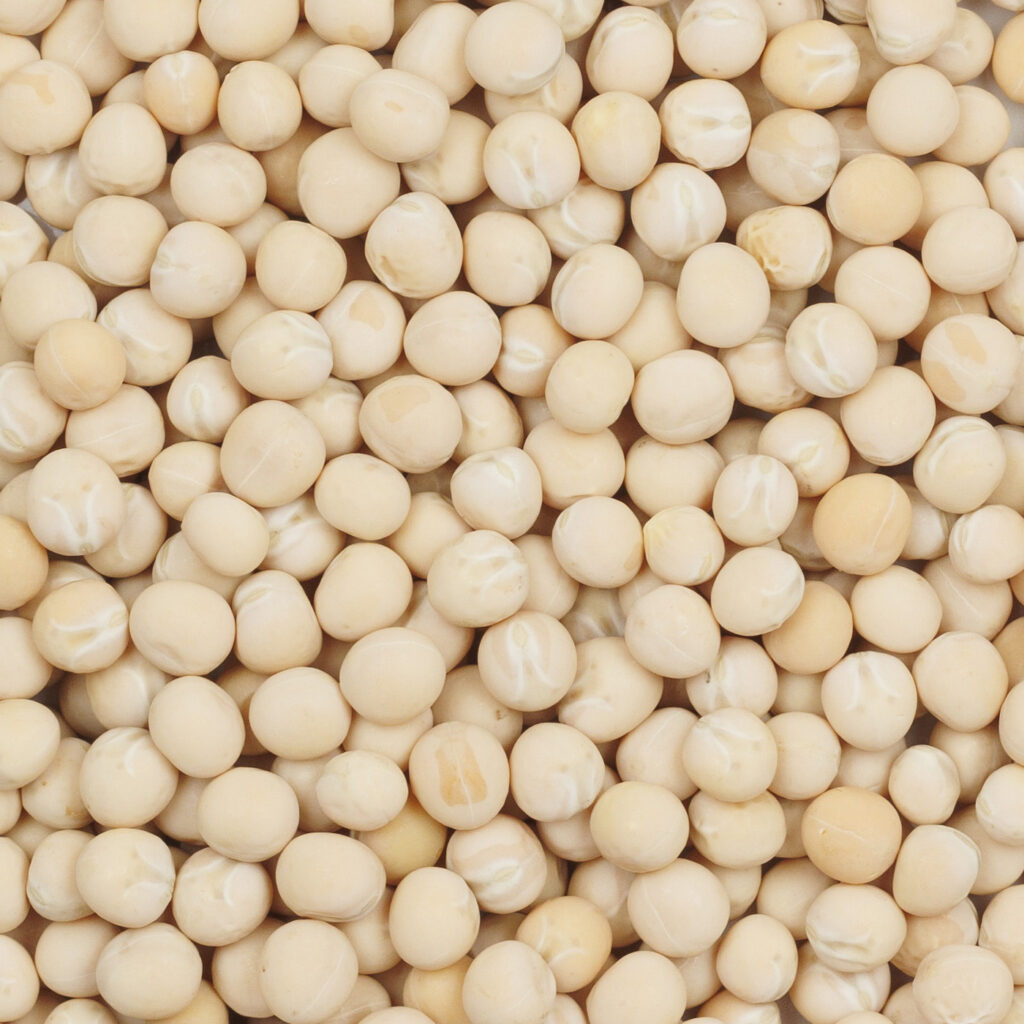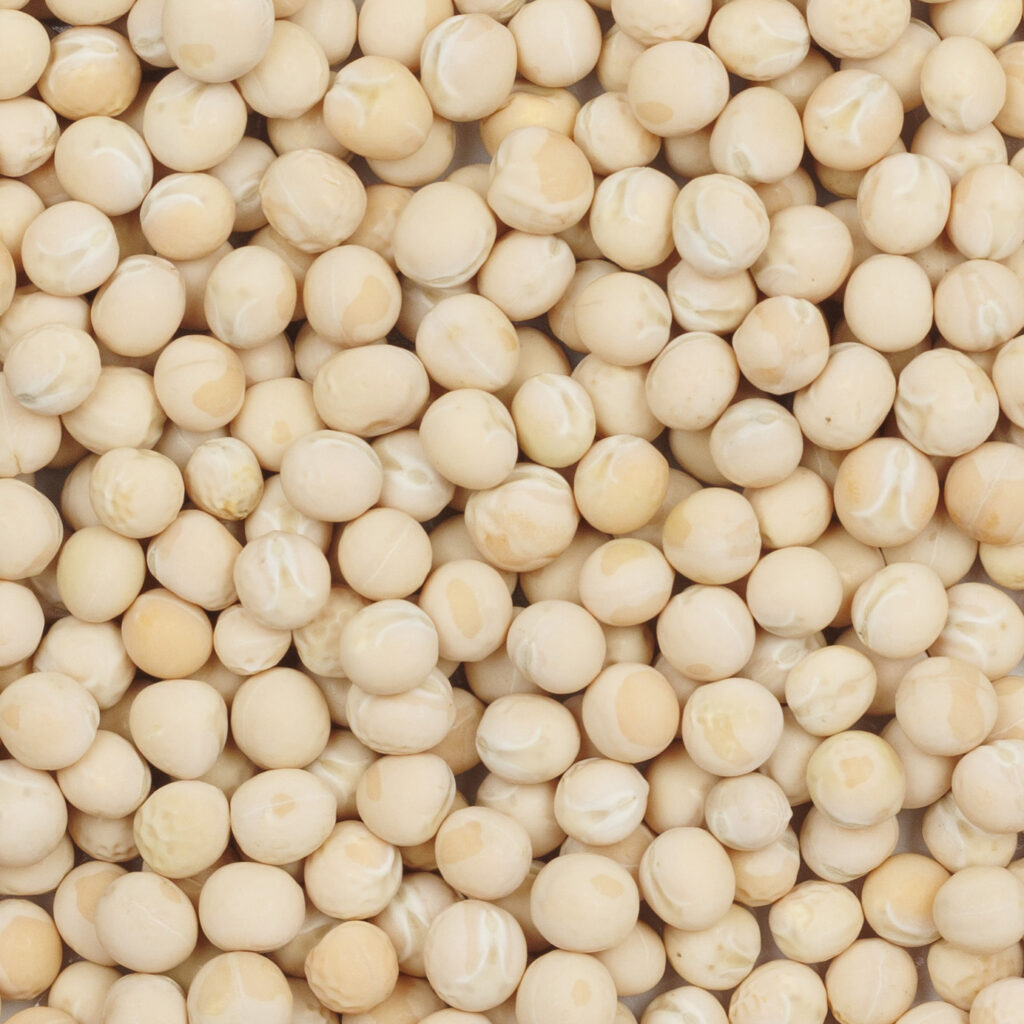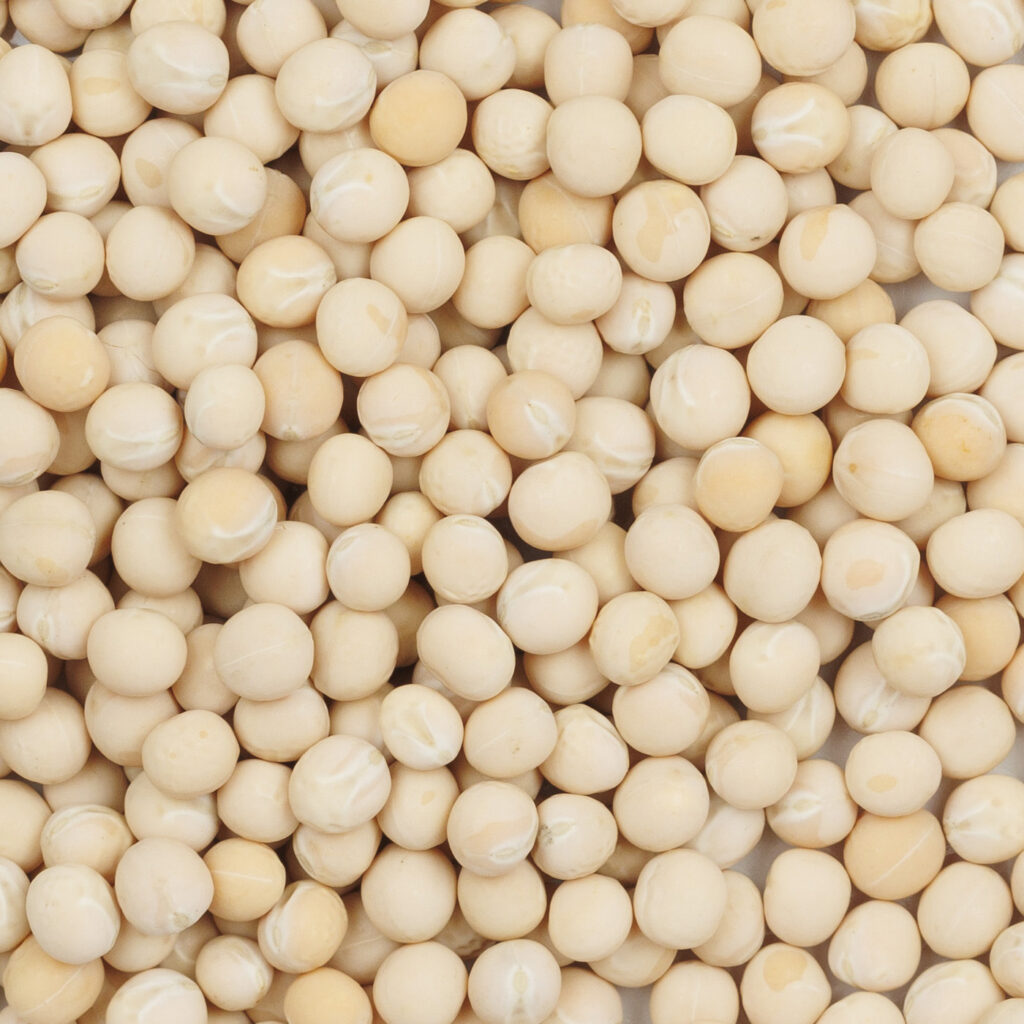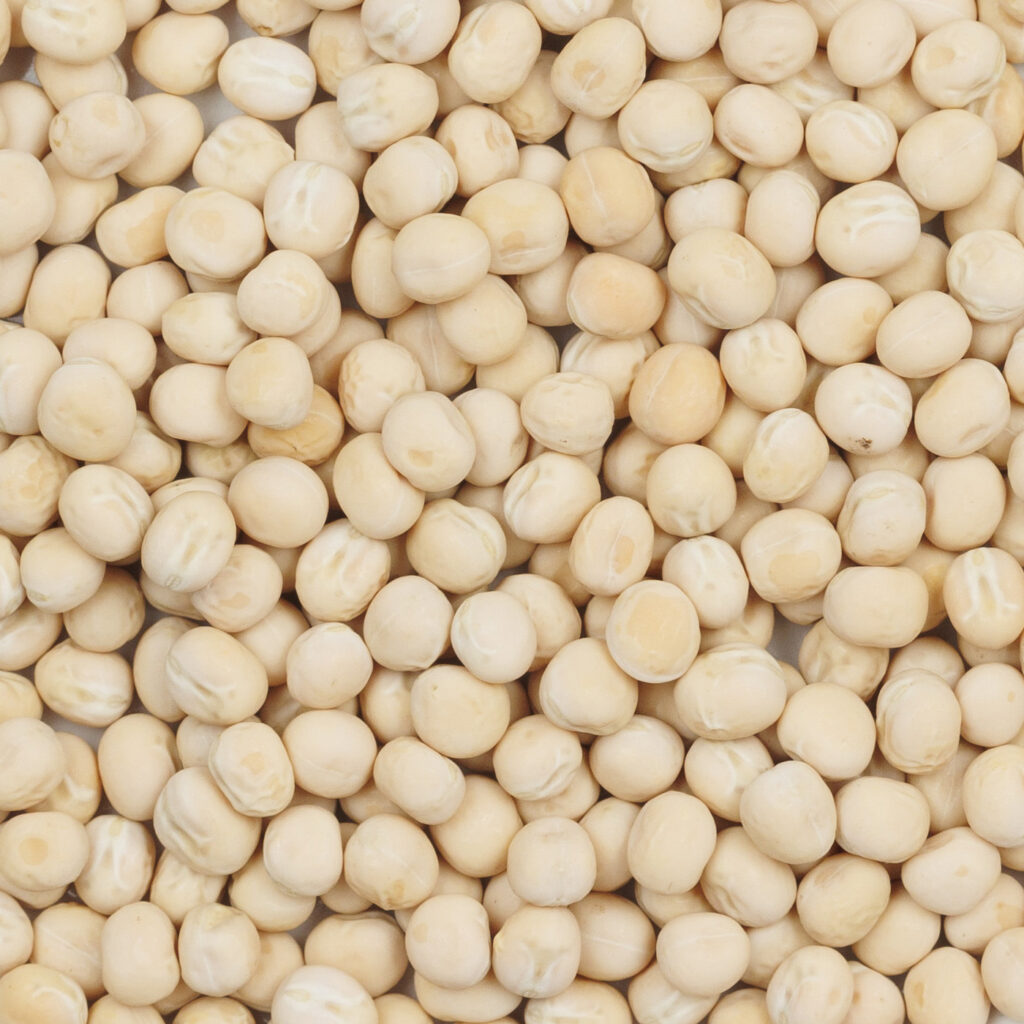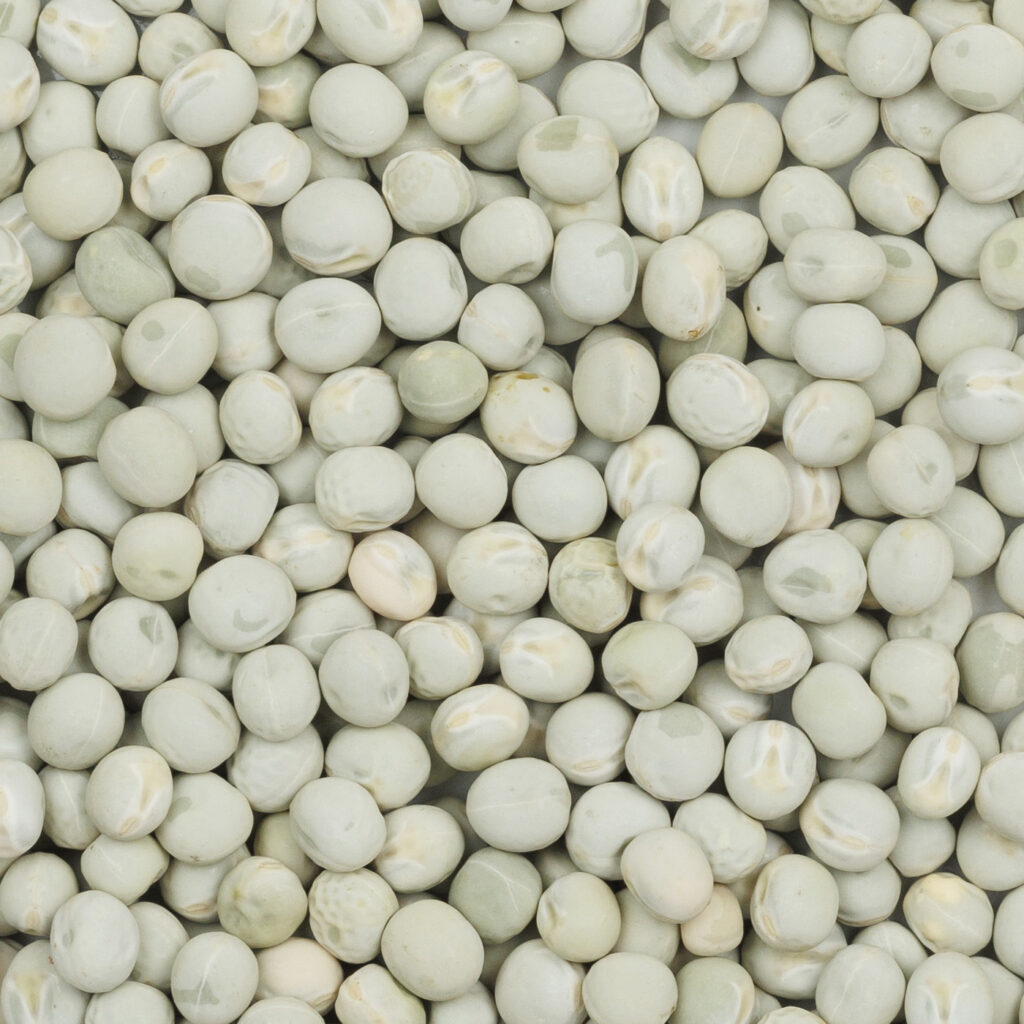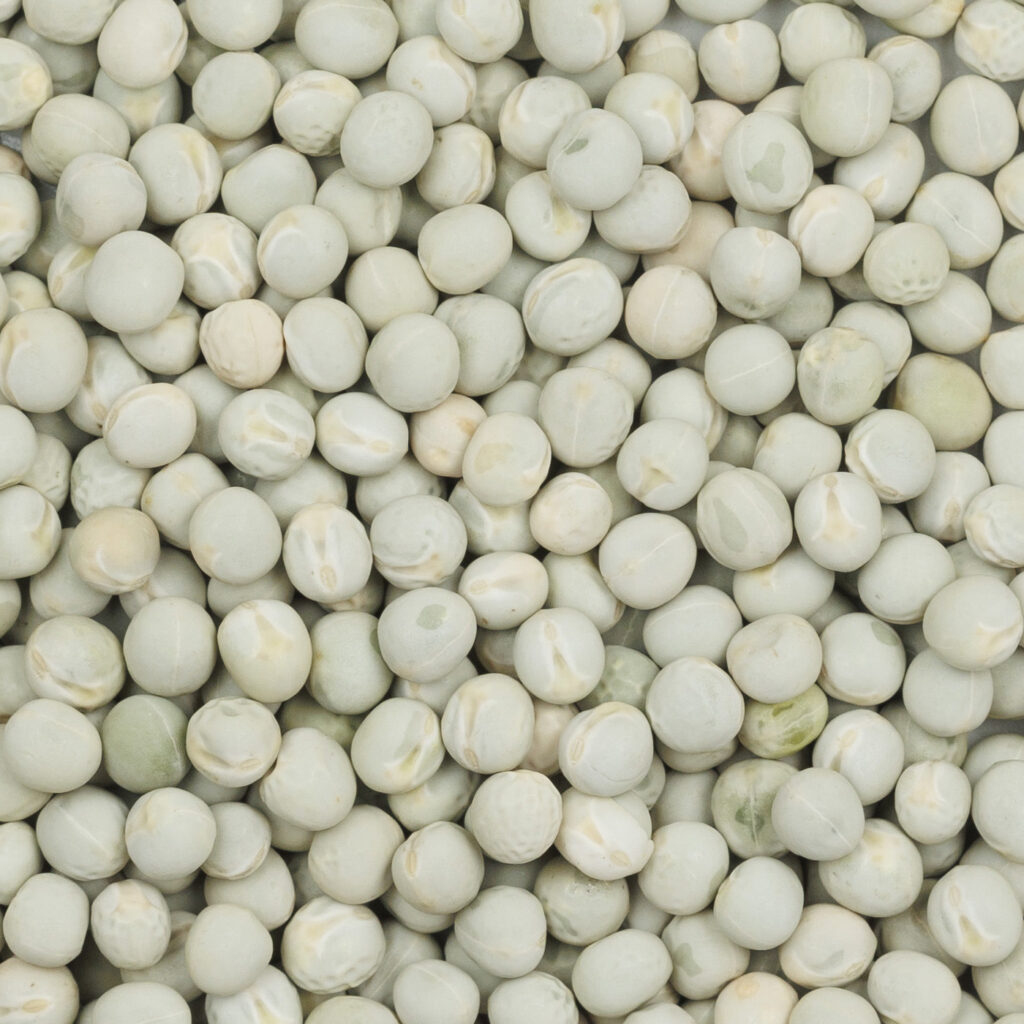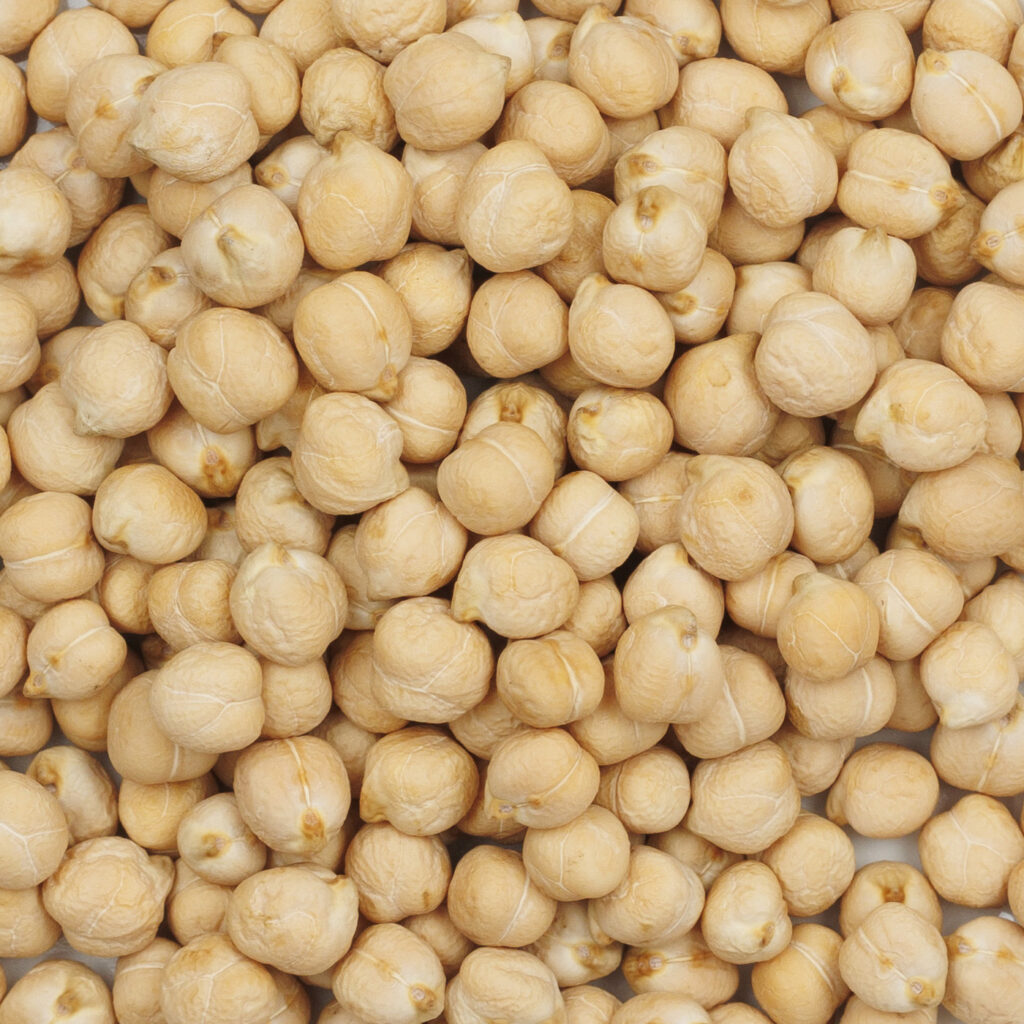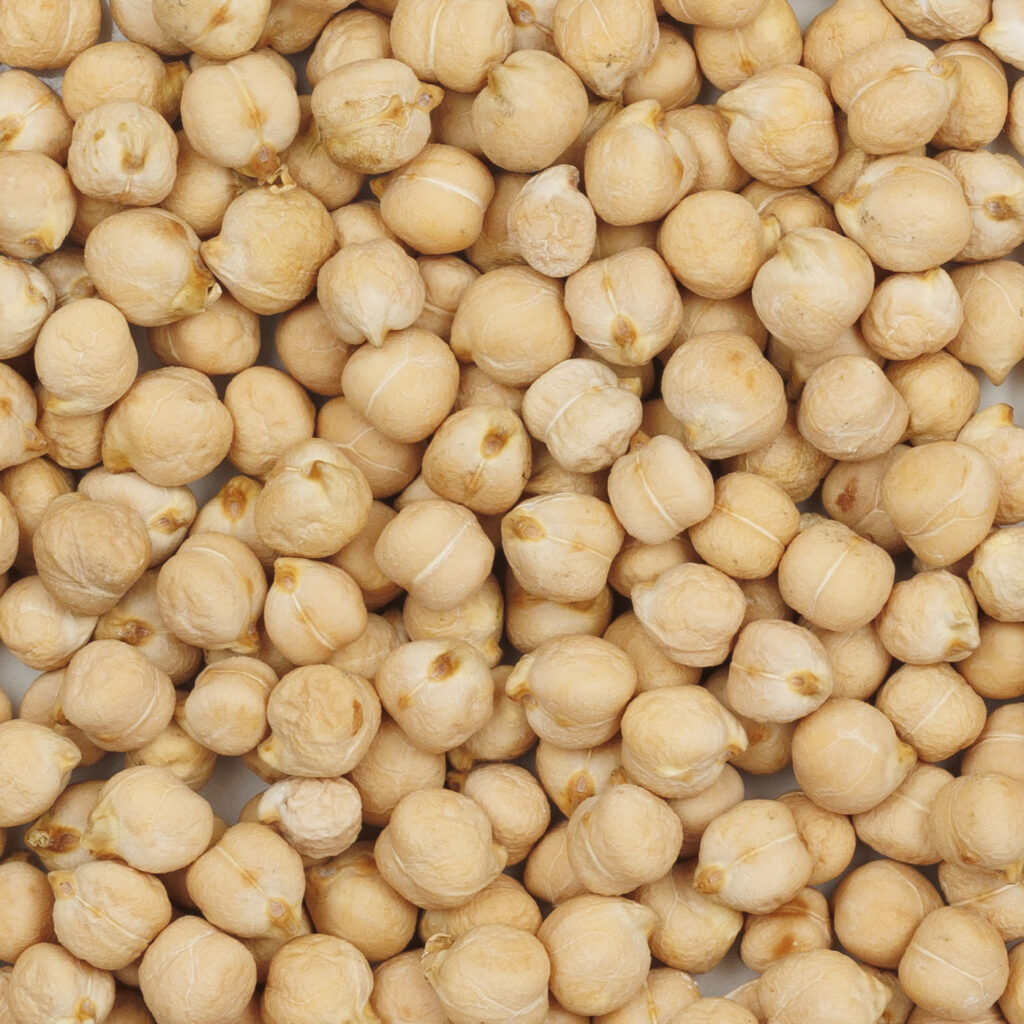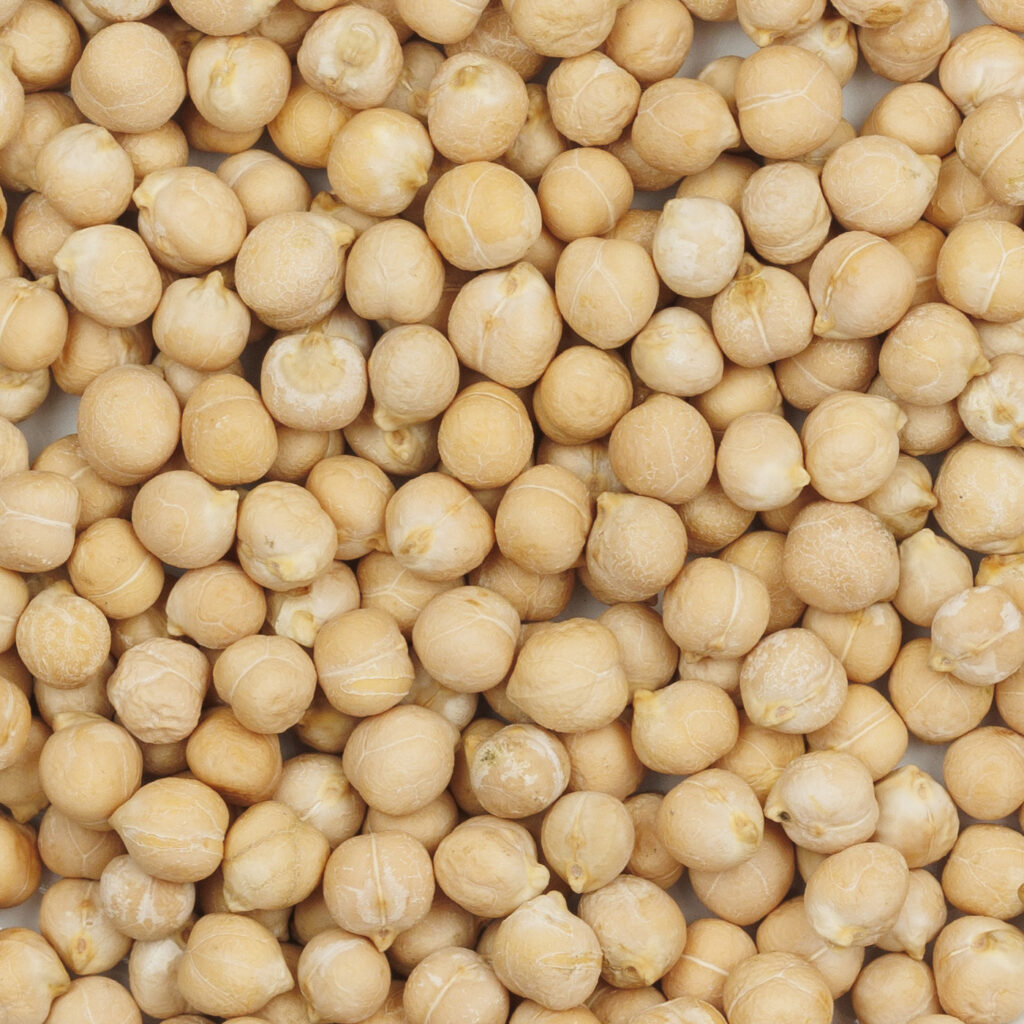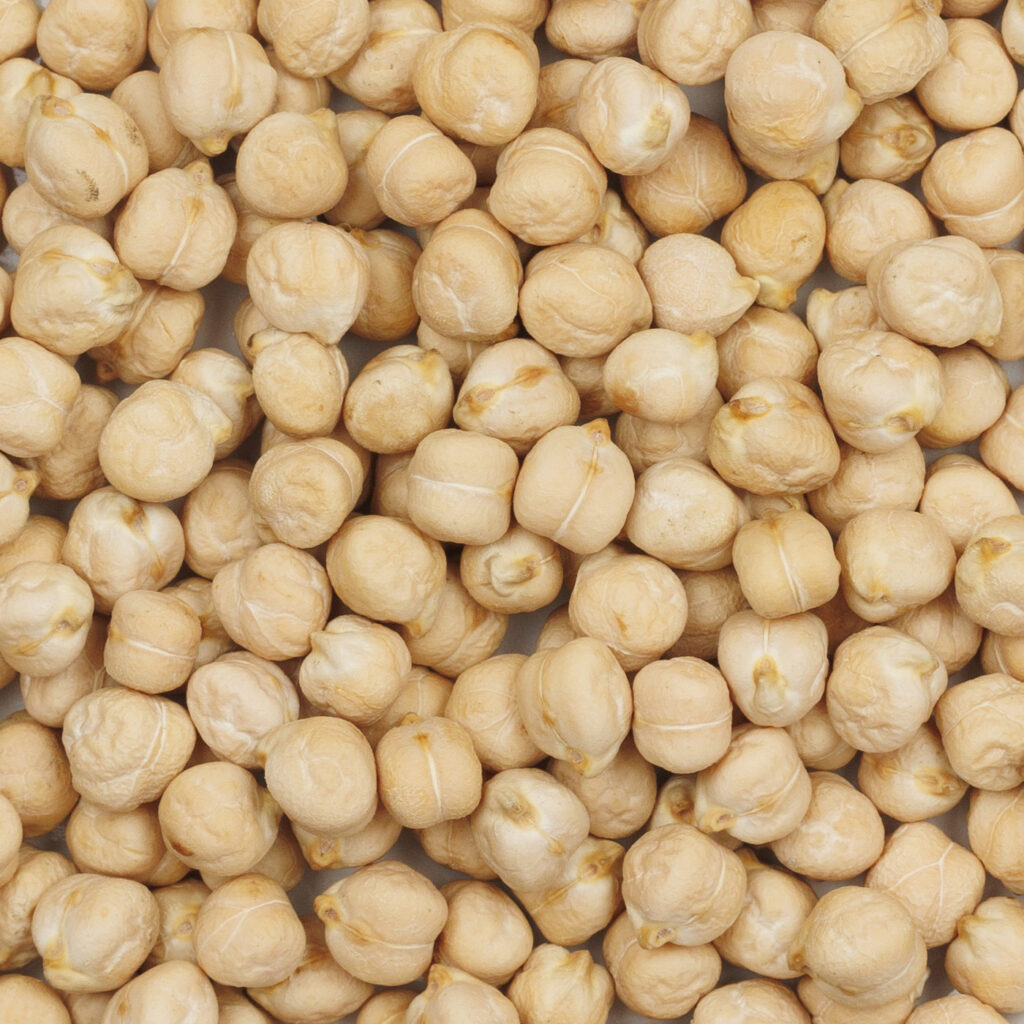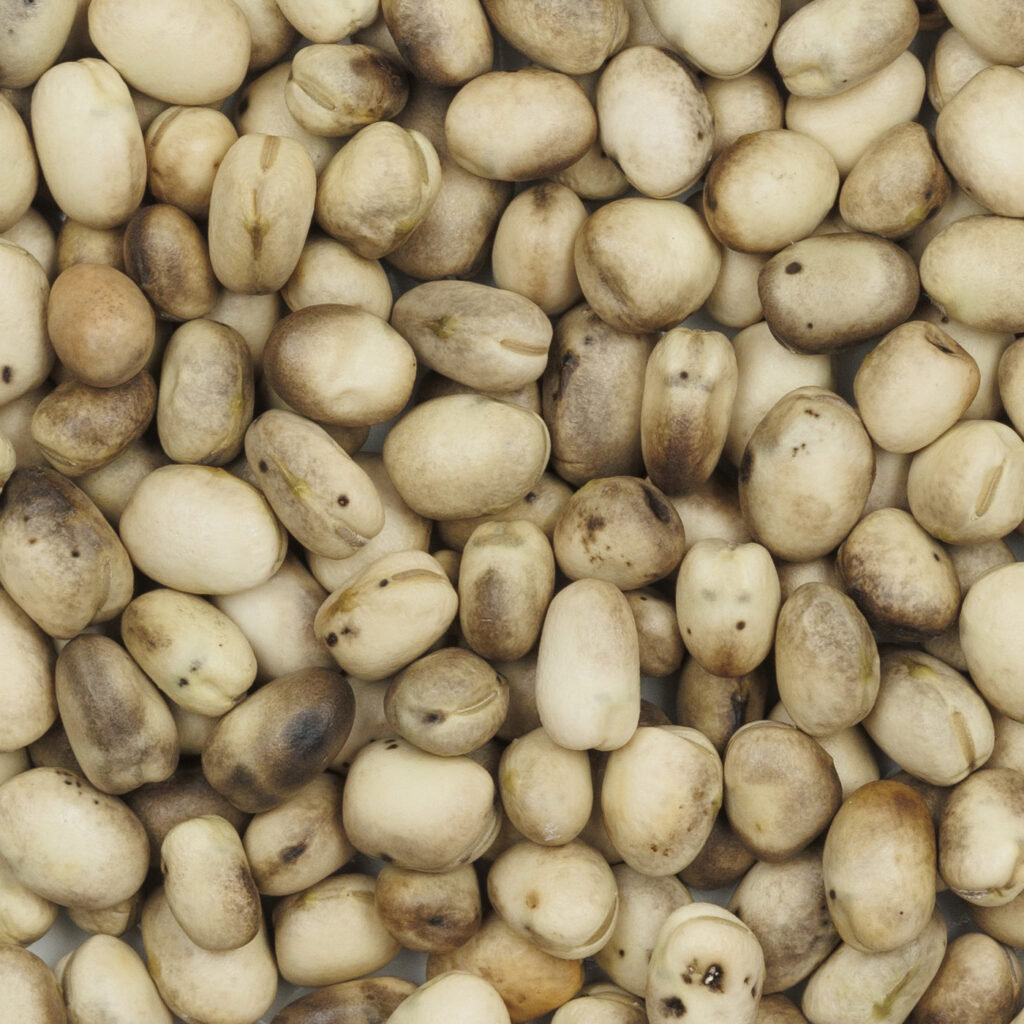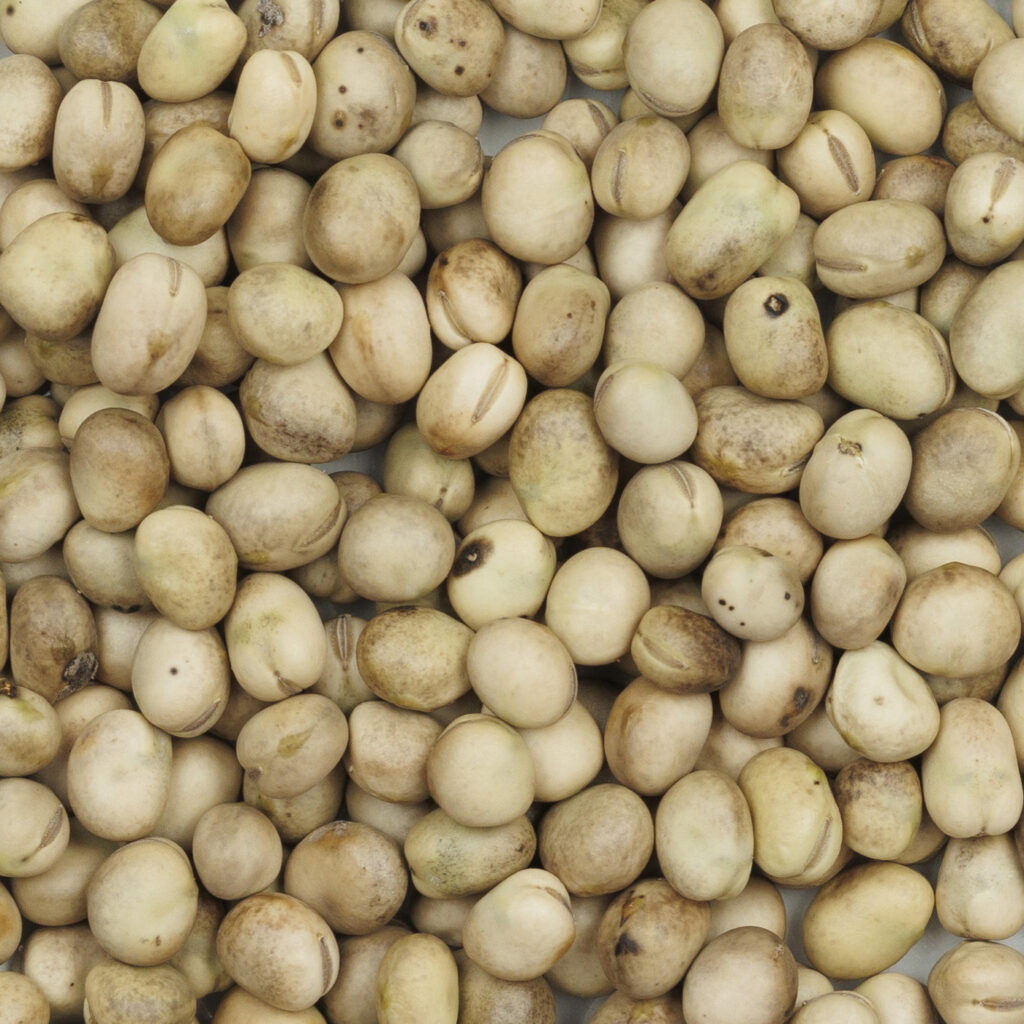New varieties. Same fields. Better yields.
As farmers plan their seeding for the upcoming production year, it is worth considering a shift to the latest varieties of red lentil, green lentil, yellow pea, green pea, Kabuli chickpea, and low-vicine/convicine (LVC) faba bean for improved yields. These new varieties have outperformed traditional ones in various ways, including enhanced yields, higher protein content, improved seed quality, increased standability, and reduced bleaching.
Red Lentil
In Saskatchewan, a small red lentil variety, CDC Maxim Clearfield® (CL), has dominated the market since its introduction in 2007; however, its popularity has continued to decline as growers increasingly opt for newer, higher-yielding alternatives. For 2026, growers have exciting new options, including two breakthrough varieties that outperform established standards.
*Clearfield is a registered trademark of BASF, used under license by BASF Canada Inc. © 2025 BASF Canada Inc.
% Yield of CDC Nimble CL by Variety for Red Lentils
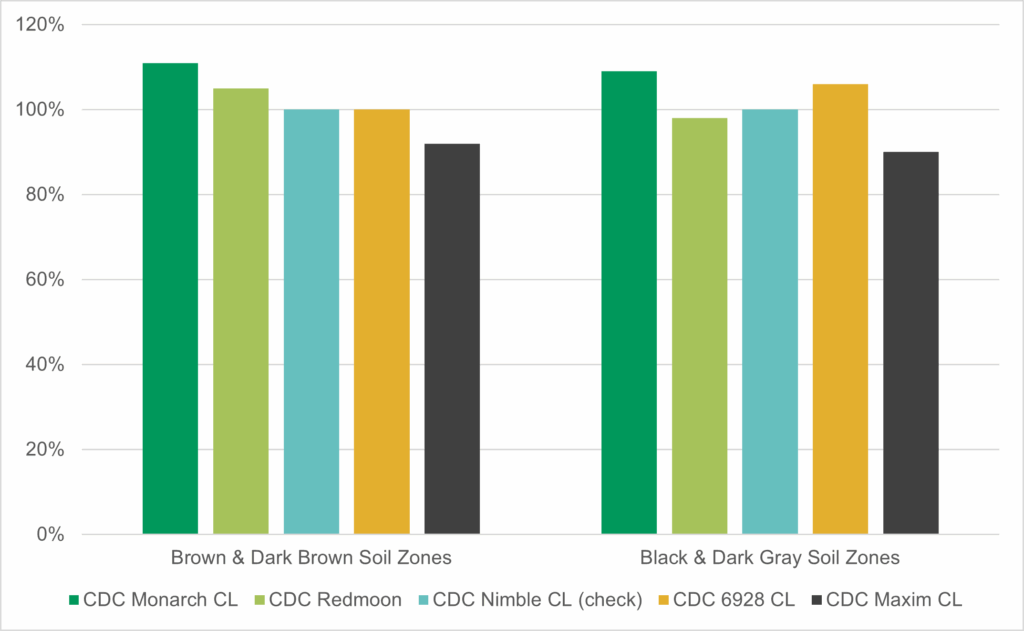
CDC Monarch CL, NEW large red lentil
CDC Monarch CL represents a breakthrough in the large red lentil market class, achieving the highest yield of any red lentil variety in both northern and southern geographies. This variety yields 11% more than CDC Nimble CL in the south and 9% more in the north, while outperforming CDC Maxim CL by 19% in both regions. Compared to CDC KR-2 CL (King Red, the last widely grown large red lentil), CDC Monarch CL delivers 14% higher yield in the south and an impressive 26% higher yield in the north. The variety is taller than CDC Nimble CL or CDC Maxim CL and offers good yield stability with moderate resistance to Ascochyta blight and Anthracnose (race 1).
Learn more about CDC Monarch CLCDC Redmoon, small red lentil
CDC Redmoon remains a suitable non-Clearfield option for small red lentils, particularly valuable for growers using alternative herbicide programs or dealing with Group 2-resistant weeds. It yields 5% more than CDC Nimble CL in the south. Compared to CDC Maxim, it delivers 13% higher yield in the south and 8% higher yield in the north. This variety offers proven field production performance, with seed thickness greater than that of CDC Maxim, and moderate resistance to Ascochyta blight and Anthracnose (race 1).
Learn more about CDC RedmoonCDC Nimble CL, small red lentil
CDC Nimble CL remains a high-performing small red lentil variety, yielding 8% more than CDC Maxim CL in the south and 10% more in the north. This variety exhibits good yield stability and features a small seed size, making it economical for seeding, as well as improved seed thickness, which is suitable for dehulling. It also demonstrates moderate resistance to both Ascochyta blight and Anthracnose (race 1).
Learn more about CDC Nimble CLCDC 6928 CL (NEW), small red lentil
CDC 6928 CL is a new small red lentil that delivers exceptional performance, particularly in northern growing conditions. It yields the same as CDC Nimble CL in the south, but excels with a 6% higher yield in the north. Compared to the historical check, CDC Maxim CL and CDC 6928 CL show improvements, with 8% higher yield in the south and 16% higher yield in the north. This variety features a small seed size, making it more economical for seeding, and is moderately resistant to both Ascochyta blight and Anthracnose (race 1).
Learn more about CDC 6928 CLGreen Lentil
The green lentil market is experiencing innovation with the introduction of a new small green lentil variety that complements established options.
% Yield of CDC Nimble CL by Variety for Green Lentils
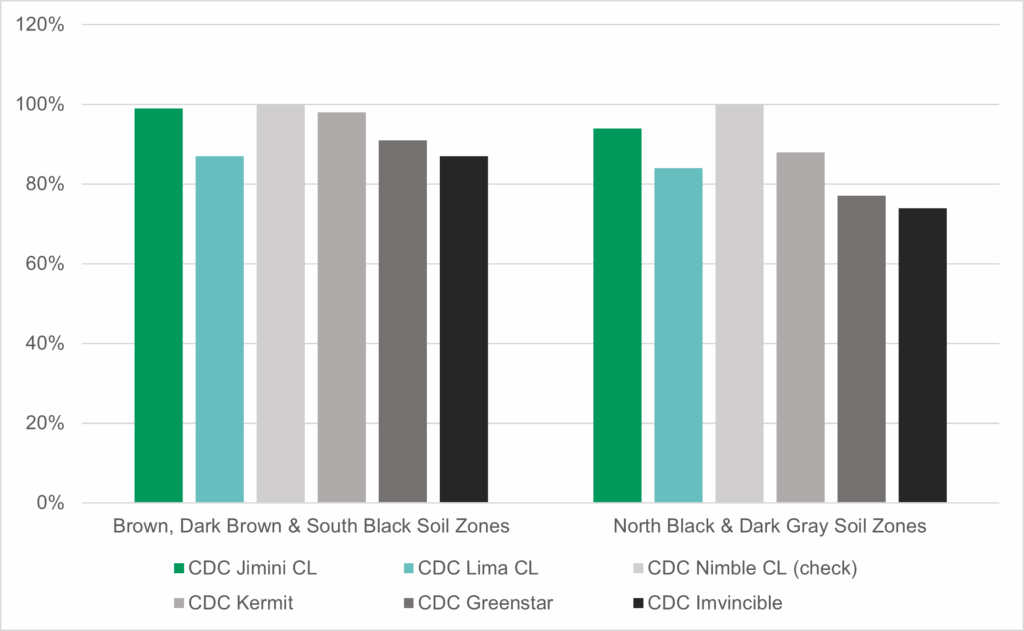
CDC Jimini CL, NEW small green lentil
CDC Jimini CL is a new, small green lentil that achieves the highest yield in both northern and southern geographies. This variety yields 12% higher than CDC Imvincible CL in the south and an impressive 20% higher in the north, while also delivering a 6% higher yield than CDC Kermit in the north. CDC Jimini CL performs at 99% of the small red check variety, CDC Nimble CL, in the south, and 94% in the north, making it highly competitive across market classes. The variety is taller than CDC Invincible CL and CDC Maxim CL and features a larger seed size for this market class (38 g/1000 seeds vs. 34 g for CDC Invincible CL). It offers moderate resistance to both Ascochyta blight and Anthracnose (race 1).
Learn more about CDC Jimini CLCDC Lima CL, large green lentil
CDC Lima CL remains the highest-yielding large green lentil variety in northern conditions, yielding 7% more than CDC Greenstar. This variety delivers 87% of the small red check variety CDC Nimble CL in the south and 84% in the north, with moderate resistance to Ascochyta blight and Anthracnose (race 1).
Learn more about CDC Lima CLYellow Pea
Older varieties such as CDC Meadow and CDC Amarillo continue to lose ground to newer, higher-yielding options. For the 2026 production season, yellow pea growers have four compelling varieties to consider, including one new addition.
% Yield of CDC Amarillo by Variety for Yellow Peas
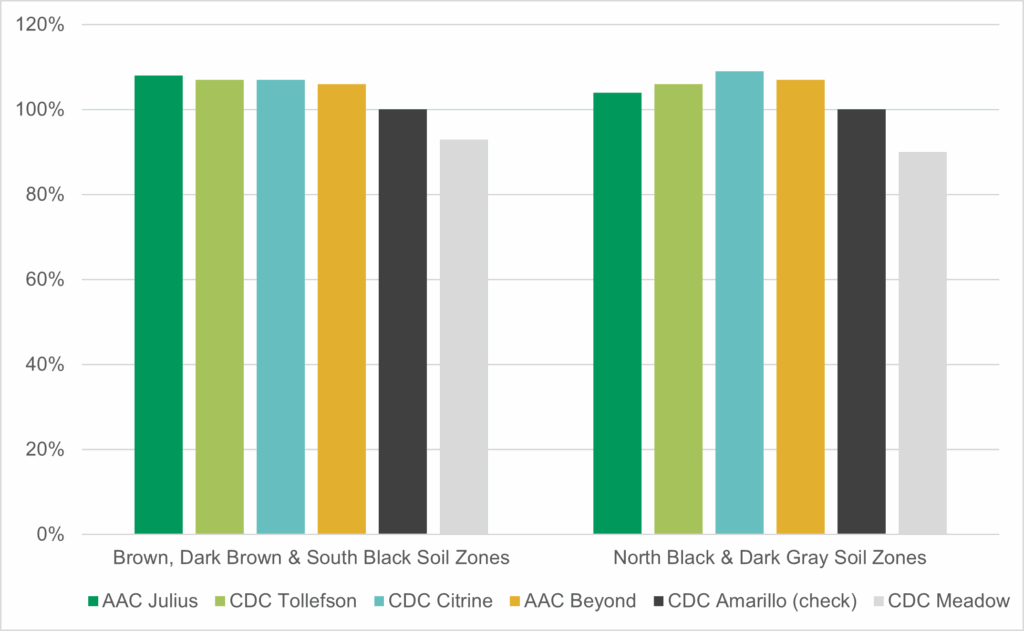
AAC Julius
AAC Julius maintains strong performance, yielding 8% more than CDC Amarillo in the south and 4% more in the north. It outperforms older varieties, yielding 15% more than CDC Meadow in the south and 14% more in the north. This early-maturing variety offers good protein (0.4% higher than CDC Amarillo), good resistance to seed coat breakage, small seed size for economical seeding, and moderate resistance to Fusarium root rot.
Learn more about AAC JuliusCDC Tollefson
CDC Tollefson delivers consistent high yields across geographies, yielding 7% higher than CDC Amarillo in the south and 6% higher in the north. It also produces 14% higher yields than CDC Meadow in the south and 16% higher in the north. This variety is notable for its very good standability, good resistance to seed coat breakage, and moderate resistance to Fusarium root rot.
Learn more about CDC TollefsonCDC Citrine
CDC Citrine continues to excel as the highest-yielding yellow pea in northern regions, yielding 7% more than CDC Amarillo in the south and 9% more in the north. It yields 14% more in the south and 19% more in the north than CDC Meadow. This variety features good protein content, small seed size for economical seeding, good resistance to seed coat breakage, and moderate resistance to Fusarium root rot.
Learn more about CDC CitrineAAC Beyond (NEW)
AAC Beyond is a promising new yellow pea variety that demonstrates high yields in both northern and southern geographies. It yields 6% more than CDC Amarillo in the south and 7% more in the north. Compared to older varieties, AAC Beyond shows even greater improvements, with yields 13% higher than CDC Meadow in the south and 17% higher in the north. This variety offers good standability, small seed size for economical seeding, fair resistance to seed coat breakage, and moderate resistance to Fusarium root rot.
Learn more about AAC BeyondGreen Pea
Green pea growers now have access to two new varieties that offer yield advantages and improved characteristics over traditional options.
% Yield of CDC Amarillo by Variety for Green Peas
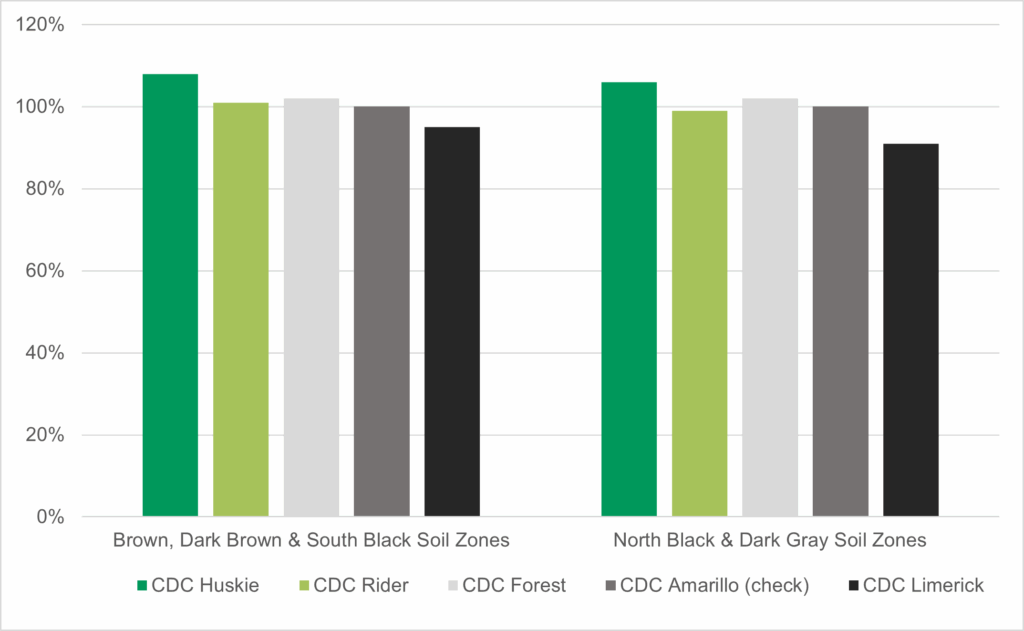
CDC Huskie (NEW)
CDC Huskie emerges as the highest-yielding green pea variety in both northern and southern geographies. It yields 6-8% more than CDC Amarillo and 4-6% more than CDC Forest, while delivering impressive yields 13-15% higher than those of CDC Limerick. This variety exhibits good resistance to bleaching (outperforming CDC Forest), offers good standability, and features a small seed size for economical seeding. It also provides good resistance to seed coat breakage and demonstrates moderate resistance to Fusarium root rot.
Learn more about CDC HuskieCDC Rider (NEW)
CDC Rider is another high-yielding new green pea variety that performs well across geographies, yielding similar to CDC Amarillo and matching CDC Forest performance in the south, while performing 3% lower than CDC Forest in the north. It delivers yields 6-8% higher than CDC Limerick. This variety stands out for its excellent standability, superior resistance to bleaching compared to CDC Forest, average seed size, good resistance to seed coat breakage, and moderate resistance to Fusarium root rot.
Learn more about CDC RiderKabuli Chickpea
Technological advancements continue to provide Saskatchewan producers with robust Kabuli chickpea varieties. Four varieties are recommended for consideration, showcasing strong yield performance, varying seed sizes, and improved disease resistance. Yield comparisons are made to CDC Lancer as the check, and CDC Leader, currently the most widely grown variety.
% Yield of CDC Lancer by Variety for Kabuli Chickpeas
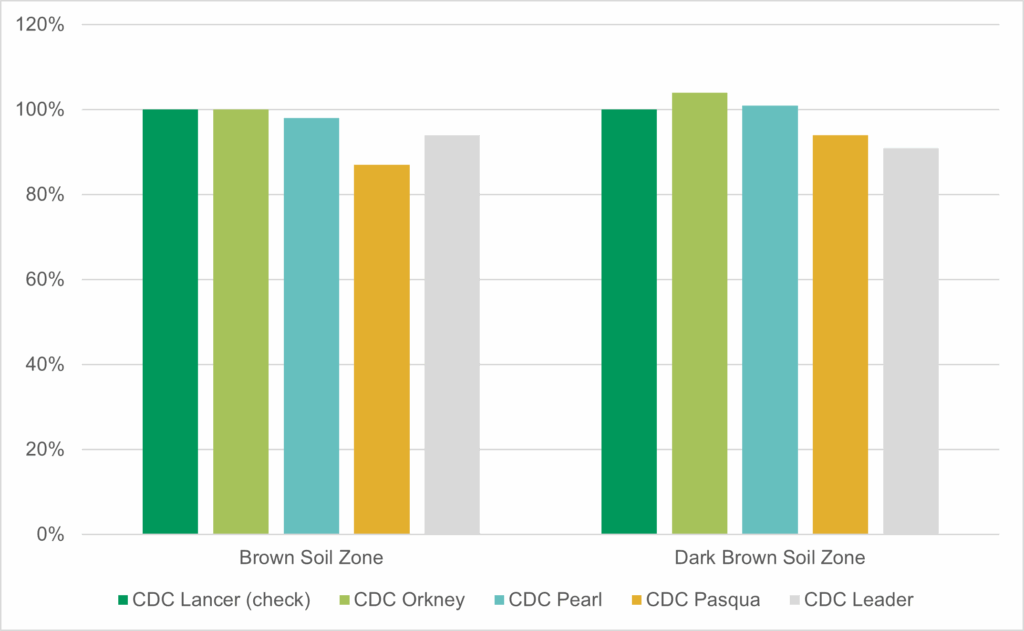
CDC Lancer
CDC Lancer maintains its position as a high-yielding, imazamox herbicide-tolerant (Solo® ADV) Kabuli chickpea, yielding 6% more than CDC Leader in the brown soil zone and 9% more in the dark brown soil zone. This medium-maturity variety (similar to CDC Leader, earlier than CDC Orion) features average seed size (357 TKW) and intermediate resistance to Ascochyta blight.
Learn more about CDC LancerCDC Orkney
CDC Orkney demonstrates excellent performance, particularly in darker soil zones, yielding the same as CDC Lancer in the brown soil zone but 4% higher in the dark brown soil zone. Compared to CDC Leader, it produces 6% more in brown soils and 13% more in dark brown soils. This medium-late maturity variety (later than CDC Lancer, similar to CDC Leader) offers average seed size (365 TKW), good yield stability, and intermediate resistance to Ascochyta blight.
Learn more about CDC OrkneyCDC Pearl
CDC Pearl continues as a high-yielding option, delivering yields 2% lower than CDC Lancer in brown soils but 1% higher in dark brown soils. Compared to CDC Leader, it yields 4% higher in brown soils and 10% higher in dark brown soils. This medium-late maturity variety features a small seed size (293g TKW), making it suitable for some value-add markets, and exhibits intermediate resistance to Ascochyta blight.
Learn more about CDC PearlCDC Pasqua
Its large seed size is a characteristic of CDC Pasqua. It yields 13% less than CDC Lancer in brown soils and 6% less in dark brown soils, and 7% less than CDC Leader in brown soils but 3% more in dark brown soils. CDC Pasqua produces the largest seed size available, capable of reaching 10mm (476g TKW). This late-maturing variety (later than CDC Leader, similar to CDC Orion) has intermediate resistance to Ascochyta blight.
Learn more about CDC PasquaFaba Bean
As agriculture in Saskatchewan evolves, faba beans continue to emerge as a highly beneficial crop, particularly in the province’s cooler, moist areas. The introduction of two new low vicine/convicine (LVC) varieties provides additional options for growers looking to capitalize on this growing market.
Read more about the reasons for considering growing faba beans.
% Yield of Navi by Variety for Faba Beans
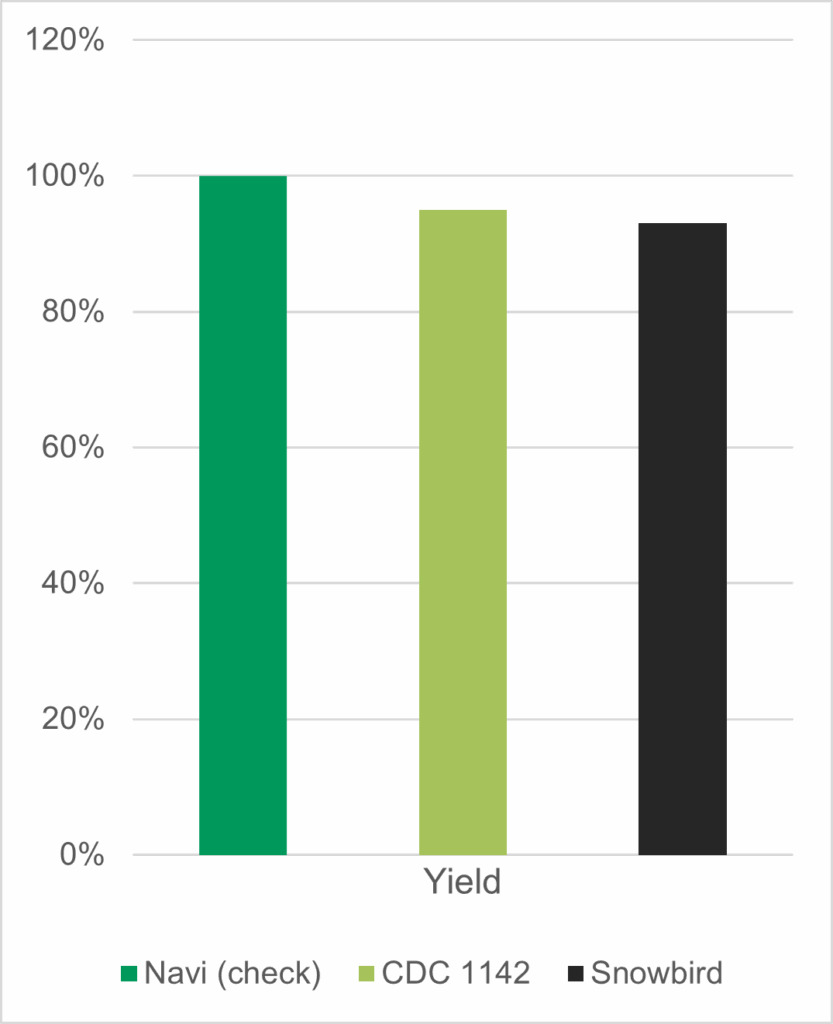
Navi (NEW)
Navi is a new low vicine/convicine (LVC) and zero-tannin white-flowered faba bean variety that yields 7% more than Snowbird. This variety matures 6 days later than Snowbird. It features a smaller seed size (401 TKW) compared to Snowbird, making it an attractive option for growers seeking improved performance in the LVC market.
Learn more about NaviCDC 1142 (NEW)
CDC 1142 is another new low vicine/convicine (LVC) variety, a zero-tannin white-flowered variety that yields 5% less than Navi but 3% more than Snowbird. This variety matures 2 days later than Snowbird and 4 days earlier than Navi. Its small seed size (341 TKW) makes the seed more economical, as it is smaller than both Snowbird and Navi.
Learn more about CDC 1142The Interactive SaskSeed® Guide allows users to search for variety information relevant to their local area, selecting specific characteristics and generating a report that shows the varieties best suited for their regional growing conditions, as well as listings of the breeder, distributor, and pedigreed seed growers who have that certified seed available.
